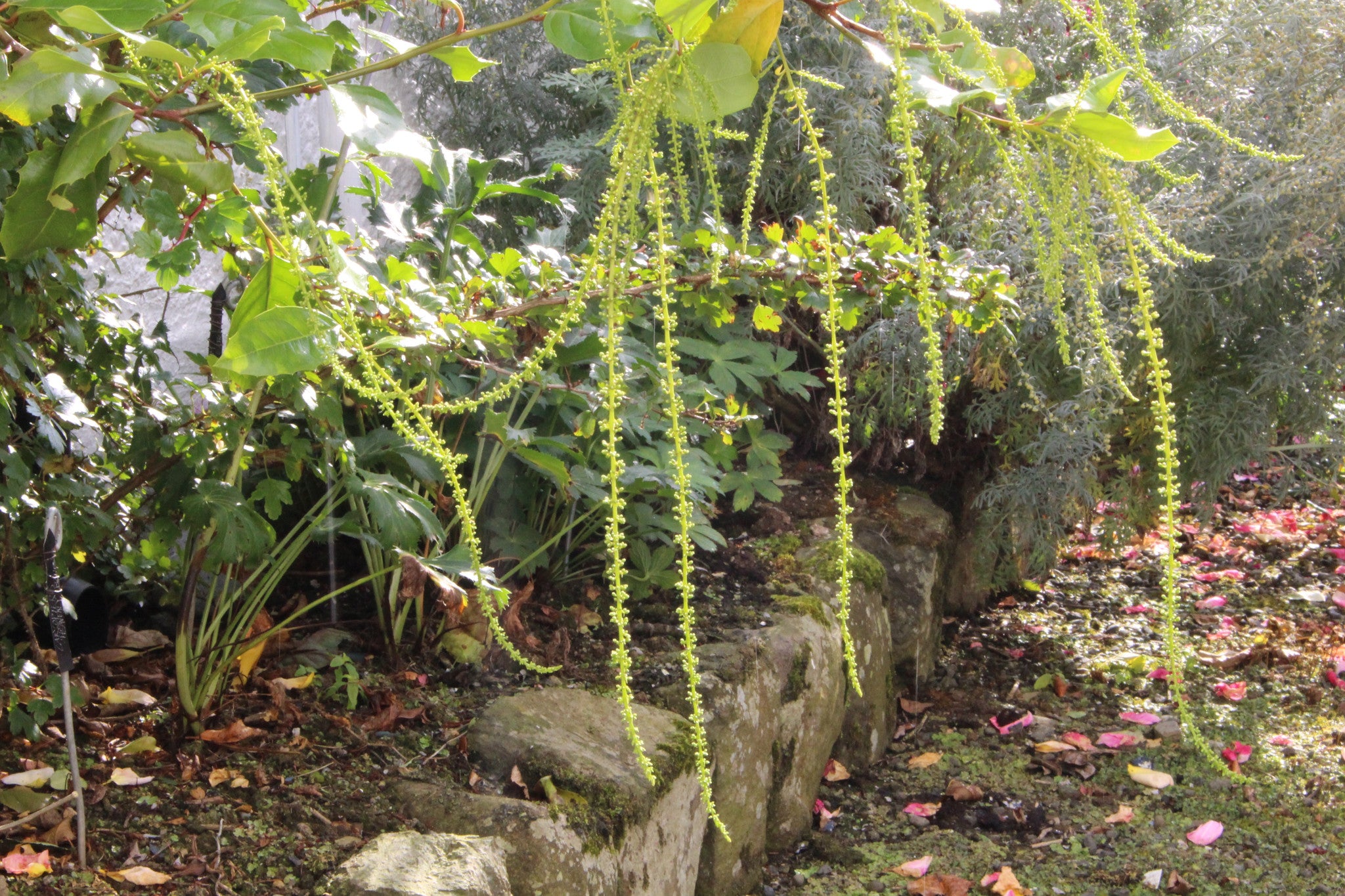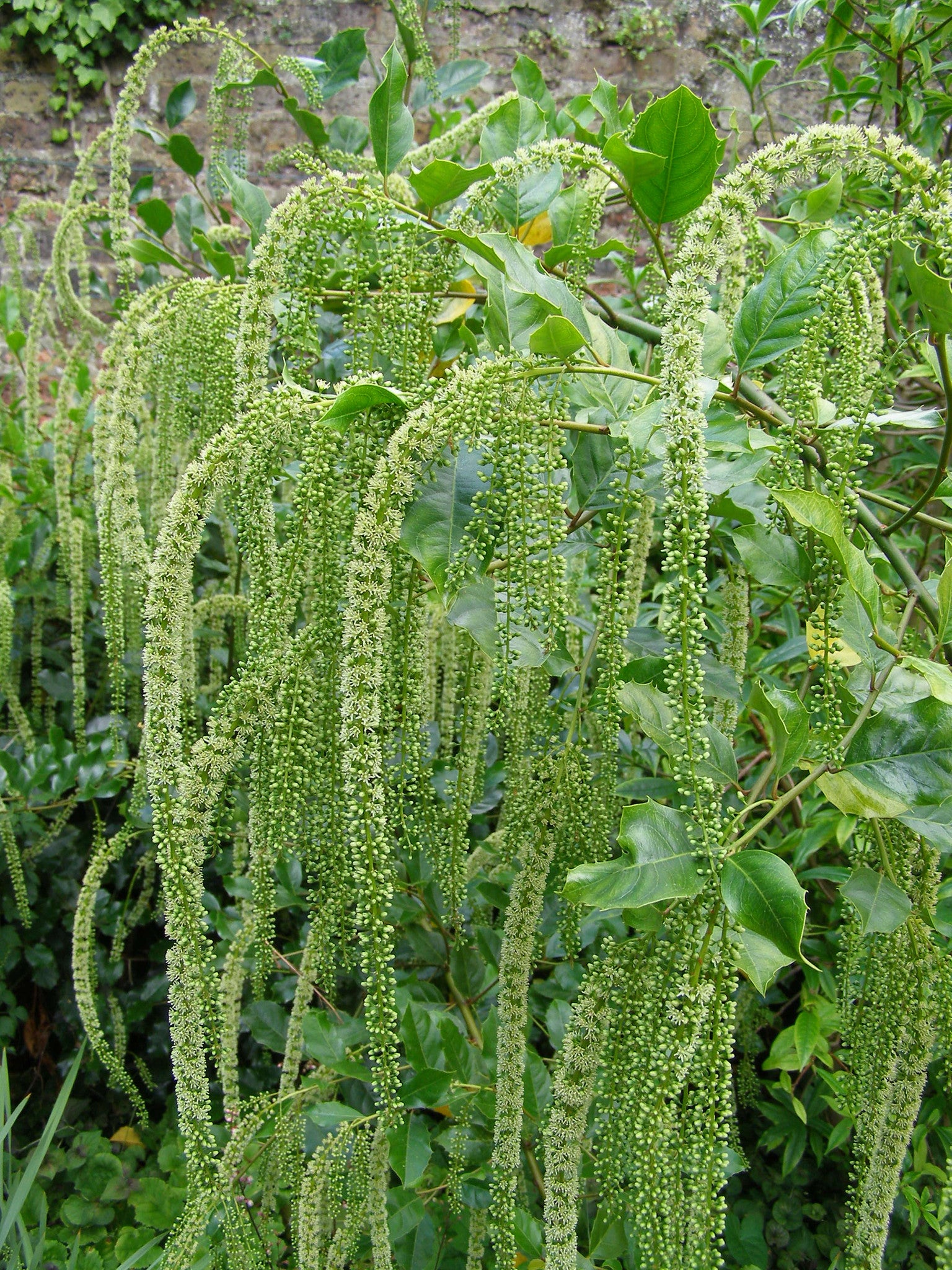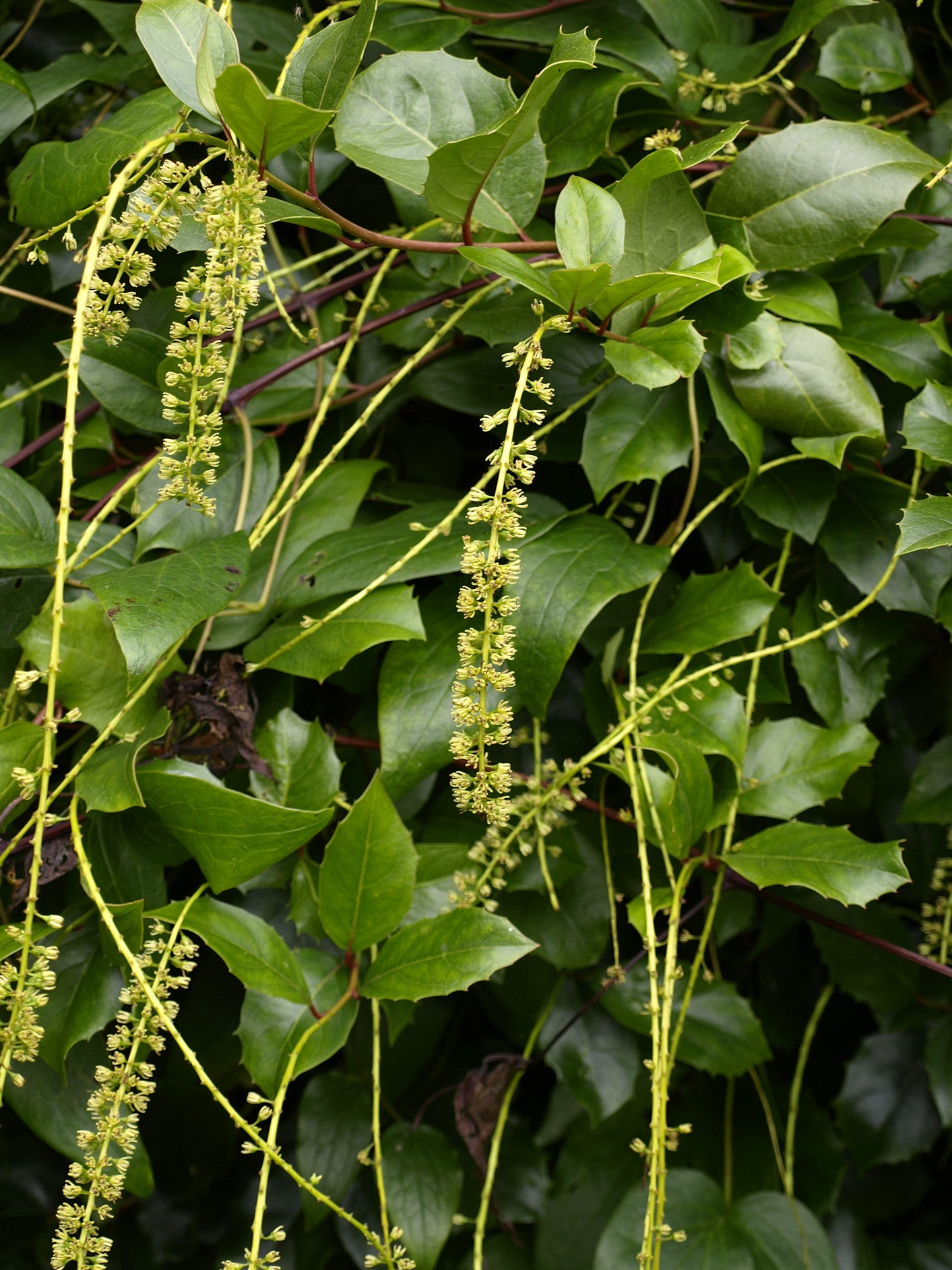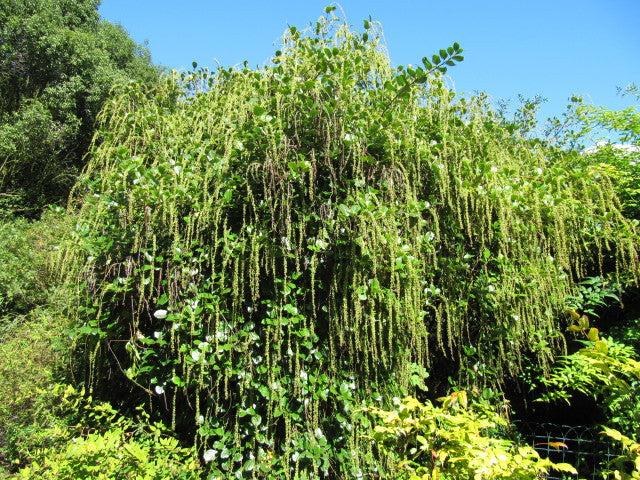Itea ilicifolia
Approx. 0.5 litre pot
About this cultivar:
Itea ilicifolia, with us, never fails to cover itself with long, greenish-white catkins each summer and autumn. The evergeen leaves are great too. In fact the specific epithet means holly-leaved (ilicifolia from Ilex-folium) so unsurprisingly the leaves are dark glossy green all year round.
The flowers are produced in abundance in narrow, pendulous, catkin-like racemes, up to 30 cm long. They are tiny and densely packed; greenish-white in colour; and fragrant - a hint of honey scent. As mentioned, flowering often continues well into autumn.
Bob Mitchell (St Andrews Botanic Garden Honorary Curator) writes “Itea ilicifolia was introduced by Augustine Henry from Yichang on the Yangtze in central China, in a package to Lord Kesteven who flowered it first in 1895. …..Itea ilicifolia is featured in Curtis's Botanical Magazine t. 9090 in 1925 and the plant in Bean's Trees and Shrubs of the British Isles. It has proved to be a popular plant for it received an Award of Merit in 1911; and Award of Garden Merit clarification in 1984; followed by a First Class Certificate in 1988 - praise indeed. “
The RHS website says this plant needs full sun. Ignore them, it doesn’t. It just needs a bit of moisture. Often not a problem in the British Isles. You may also read that you need a wall for frost protection. I don’t think you do
- Position: Full sun, partial shade
- Soil: Almost any soil, grows well in Ballyrobert
- Flowers: July, August, September
- Other features: Royal Horticultural Society Award of Garden Merit (RHS AGM)
- Hardiness: Fully hardy - grows well in Ballyrobert
- Habit: Climbing
- Foliage: Evergreen
- Height: 240 - 360 cm (8 - 12 ft)
- Spread: 120 - 240 cm (4 - 8 ft)
- Time to full growth: 10 to 20 years
- Plant type: Herbaceous Perennial, climber
- Colour: Green, white
- Goes well with: --
About this genus:
Itea is a genus that belongs to the Grossulariaceae to which Escallonia and Ribes also belong. (Others place it in Escalloniaceae.) Be that as it may, there are 15 species of Itea - 14 from East Asia and 1 deciduous species from North America - Itea virginica.
They can be deciduous shrubs, or evergreen shrubs or small trees, with small white, cream or pale green flowers. Flowers are small, with 5 sepals and 5 petals, borne in racemes or spikes.
It gets its name from the Greek, itea, for a willow (Iteaceae). The leaves are alternate. They are native to eastern Asia, and with one deciduous species from eastern North America.
Commonly know as sweet spire they get their botanical ame from the Greek, itea, for a willow (Iteaceae).
Some species are grown in ornamental gardens for their long pendant and fragrant flower heads. These include the evergreen I. ilicifolia and I. yunnanensis from central and western China. A different upright growing characteristic can be found in the deciduous I. virginica of eastern North America.
As useful shade loving shrubs or small trees they seem to grow almost anywhere in the Births Isles, so I wouldn't stress too much. Many of the species are found by streams in the wild.










